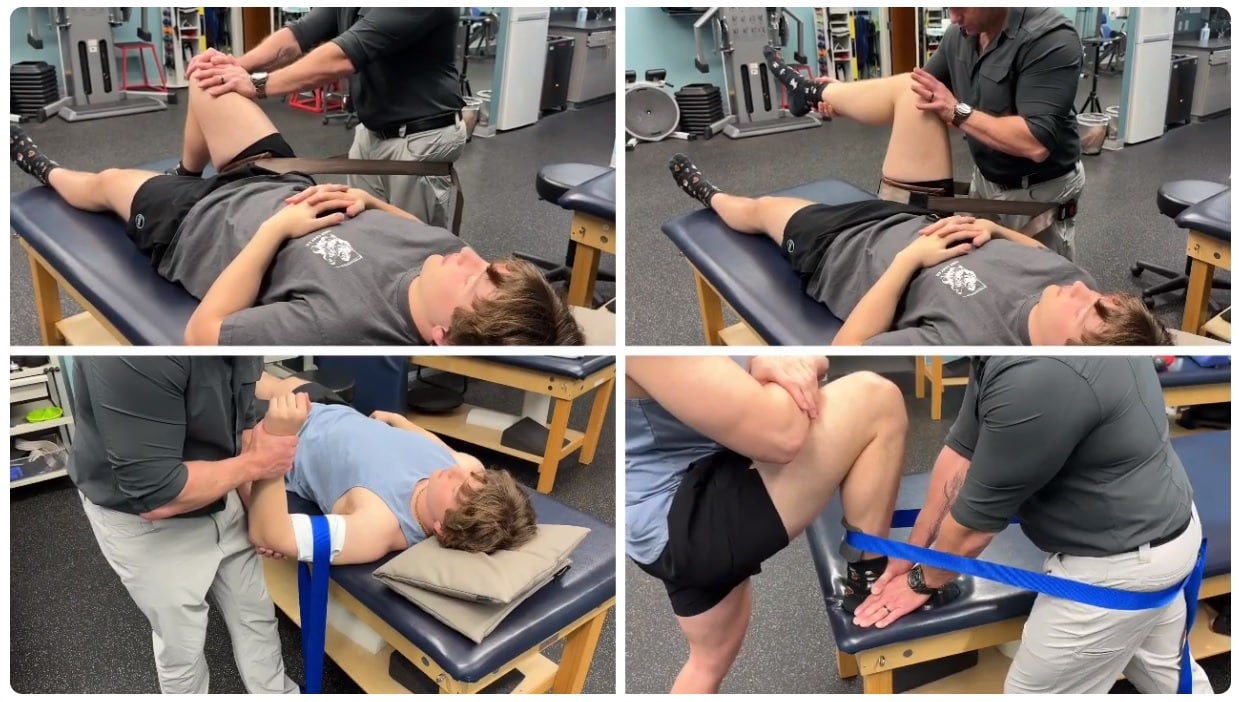The video below discusses joint mobilization techniques in physical therapy that provide therapeutic benefits. Listen to what Cary Orthopaedics’ physical therapist Chad Moses has to say about joint range of motion.
What is joint mobilization?
Joint mobilization is a skilled manual therapy technique. The physical therapist moves the patient’s joints in different motions at varying speeds to improve overall joint function. It is one of the most frequently used manual physical therapy techniques.
Physical therapists utilize this therapy following injuries or periods of immobilization to offer musculoskeletal pain relief and restore a normal range of motion.
This PT method is not invasive or surgical, yet it offers many therapeutic benefits for orthopedic conditions. It decreases pain and improves joint rehabilitation after surgery, back pain, sports injuries, arthritis and more.
How does mobilization of the joint work?
When a physical therapist performs joint mobilization on an orthopedic patient, they stabilize one part of the joint and then apply manual pressure to another part. This encourages the joint to extend further and improves joint function.
This therapy seeks to restore the best motion possible in the patient’s physiological and accessory ranges. Physiological joint motions are movements that patients can do voluntarily, like raising an arm overhead. Accessory joint motions are small movements that patients cannot do on their own. There are four types of accessory motions that joints can perform – rolling, gliding, spinning and contraction.
If a person’s accessory motions are constrained by an orthopedic injury, their physiological motion will be impacted as well.
Preparing for therapy
Moving and stretching a joint after an injury can be painful. Cary Orthopedics’ physical therapists tailor all treatments to meet the individual goals of each patient.
Before beginning joint mobilization therapy, physical therapists often have patients apply heat to the area and do gentle stretching. Then, the therapist will use their hands and other tools like mobilization belts, Graston tools or cupping devices to mobilize the joints.
Three types of joint mobilization
Therapists use three different methods to mobilize the joint for an improved range of motion. The technique used depends on the patient’s pain tolerance and the goals of treatment. The three types of joint mobilization are:
- Oscillatory – Slowly applies pressure at various points throughout a joint’s available range of motion.
- Sustained – Pulls the joint apart and holds the stretch for a short time. This reduces compression on the joint and stretches the muscles, tendons and ligaments around the joint.
- Manipulation – Uses a small, high-speed movement to thrust in the direction where the joint is tightest.
As the joints regain active range of motion, therapists will push to increase mobilization and allow for better healing.
Benefits of joint mobilization therapy
Joint mobilization offers a non-surgical, non-invasive way to reduce pain and increase range of motion. It increases circulation to the joint, which helps to clear infection and promote healing.
Mobilizing the joint early on following an injury encourages lubrication and flexibility inside of the joint. It also strengthens the muscles, tendons and ligaments around the joint. Mobilization relieves tight muscles, decreases joint pain and muscle spasms and spurs the body’s natural healing process.
Physical therapy in the Triangle
Joint mobilization is an effective therapy to reduce inflammation and pain and treat limited range of motion. Cary Orthopaedics’ team of physical therapy experts can help improve your joint health. We offer a broad range of PT services to patients in the Raleigh area. Contact us to learn more about how we can help you.






